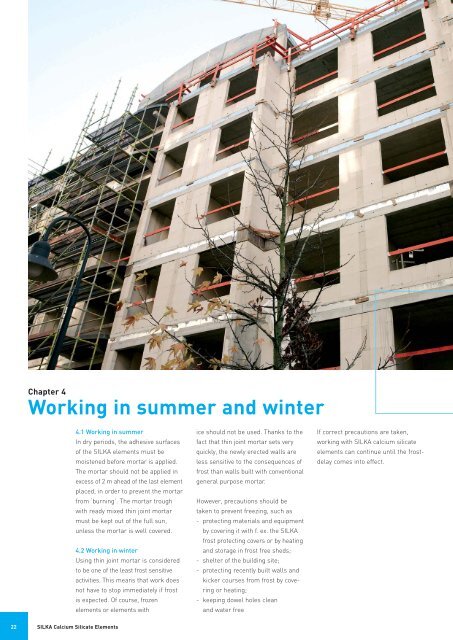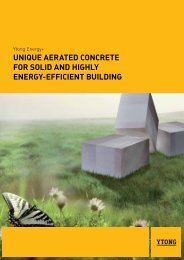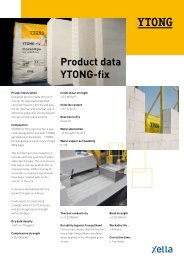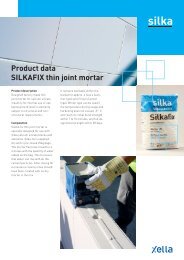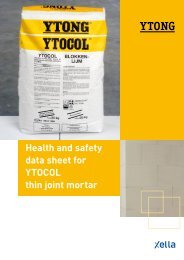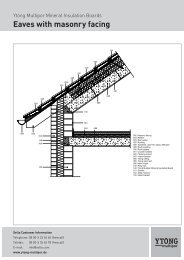SILKA calcium silicate elements - Xella UK
SILKA calcium silicate elements - Xella UK
SILKA calcium silicate elements - Xella UK
Create successful ePaper yourself
Turn your PDF publications into a flip-book with our unique Google optimized e-Paper software.
Chapter 4Working in summer and winter4.1 Working in summerIn dry periods, the adhesive surfacesof the <strong>SILKA</strong> <strong>elements</strong> must bemoistened before mortar is applied.The mortar should not be applied inexcess of 2 m ahead of the last elementplaced, in order to prevent the mortarfrom ‘burning’. The mortar troughwith ready mixed thin joint mortarmust be kept out of the full sun,unless the mortar is well covered.4.2 Working in winterUsing thin joint mortar is consideredto be one of the least frost sensitiveactivities. This means that work doesnot have to stop immediately if frostis expected. Of course, frozen<strong>elements</strong> or <strong>elements</strong> withice should not be used. Thanks to thefact that thin joint mortar sets veryquickly, the newly erected walls areless sensitive to the consequences offrost than walls built with conventionalgeneral purpose mortar.However, precautions should betaken to prevent freezing, such as- protecting materials and equipmentby covering it with f. ex. the <strong>SILKA</strong>frost protecting covers or by heatingand storage in frost free sheds;- shelter of the building site;- protecting recently built walls andkicker courses from frost by coveringor heating;- keeping dowel holes cleanand water freeIf correct precautions are taken,working with <strong>SILKA</strong> <strong>calcium</strong> <strong>silicate</strong><strong>elements</strong> can continue until the frostdelaycomes into effect.22<strong>SILKA</strong> Calcium Silicate Elements


